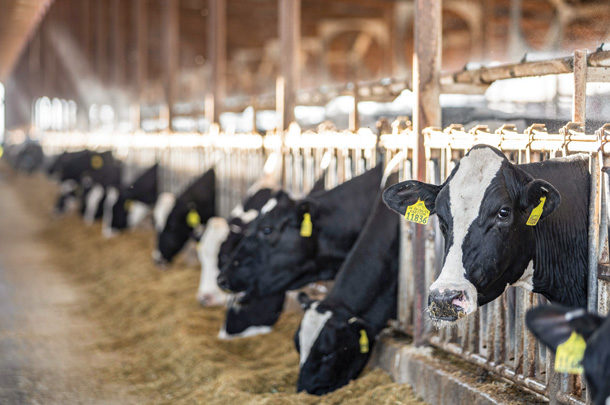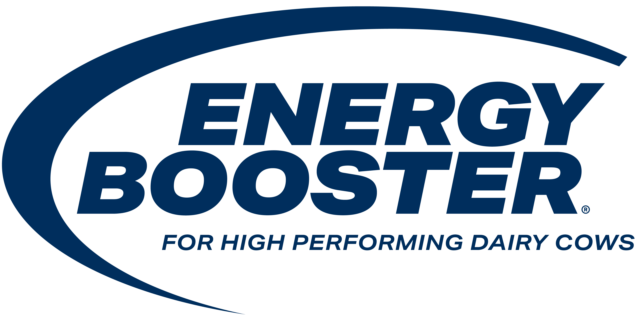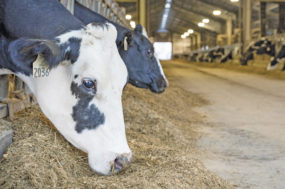With increased pressure to reduce greenhouse gas emissions from all sources, agriculture must play a part by improving efficiency of the system and reducing emissions. Agriculture contributes 10% of total U.S. greenhouse gas emissions, with livestock contributing 4% and dairy approximately 1.5% of the total. Primary greenhouse gas emissions for agriculture are carbon dioxide (CO2), methane (CH4) and nitrous oxide (N2O), each having varying strength and duration of effect on global warming. New methods are emerging to accurately calculate the impact and duration of emissions related to agriculture; however, we are going to use CO2 equivalents (CO2e) for this discussion (CO2 = 1 CO2e, methane = 25 CO2e, and nitrous oxide = 298 CO2e). Main sources of livestock greenhouse gas emissions are related to feed digestion in the rumen and manure storage (methane) and crop production (nitrous oxide). Emissions refers to the total amount of greenhouse gas emissions (g CO2e, ton CO2e) per cow, farm or region. Emission intensity is the amount of emissions per unit of product (pound CO2e per pound milk, pound CO2e per pound meat, pound CO2e per pound protein), conveying a measure of efficiency on the amount of waste relative to food produced.
Government and industry organizations are using emissions and/or emission intensity to inform legislation or company policies regarding greenhouse gas emissions from agricultural practices. As part of the Global Methane Pledge with countries in the EU, the U.S. administration has set a goal to reduce methane emissions by 30% by 2030. Steps to achieve this goal focus primarily on the natural gas industry and landfills but also include goals to reduce methane from on-farm manure storage, to provide incentives to farmers to reduce methane emissions and increase carbon sequestration, and to improve greenhouse gas measurements.
The Innovation Center for U.S. Dairy has set a goal for the dairy industry to be carbon neutral by 2050. In addition to considering best practices for a region, contribution of agriculture to the carbon emissions of a region and other factors, evaluating potential mitigation strategies requires examining both emissions as well as emission intensity. A solution that reduces emissions but reduces milk production of a cow or herd is not an acceptable solution. In contrast, a solution that decreases emissions intensity but increases emissions from a cow or herd may not be the best path forward.
Using our E-CO2’s carbon footprint model, we calculated a baseline carbon footprint for a model U.S. farm with 1,000 cows producing 22,000 pounds per lactation, growing 50% of feed on-farm and producing replacement heifers on-farm. From this baseline, we made several adjustments, including increasing milk production by 10% (increase milk) and increasing milk production by 10% per cow while reducing the herd size by 10% (maintain milk) (Table 1).
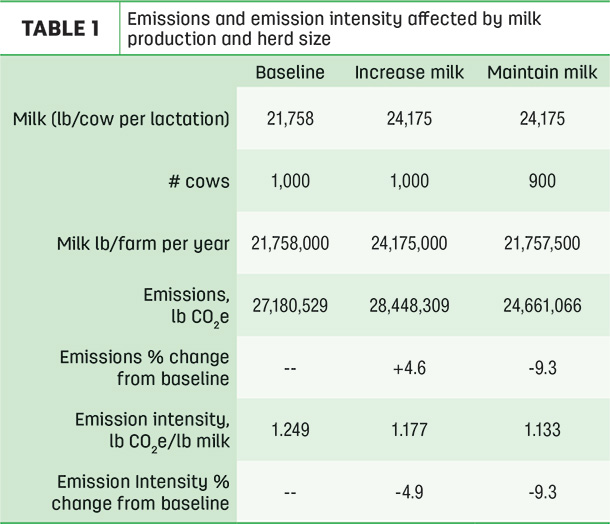
These examples demonstrate the impact of level of milk production on emissions and emission intensity. When seeking to reduce emissions, some governments or organizations may advocate doing this by decreasing the number of cattle on a farm or in a region. While decreasing cattle will decrease emissions, it will also decrease milk supply if milk production per animal or farm does not change. With a 10% increase in milk production, we saw a 4.6% increase in emissions with a 4.9% decrease in emissions intensity.
To produce more milk, higher-producing cows require more feed, produce more enteric methane and excrete more manure; however, they were more efficient in utilizing those resources and produced less waste per pound of milk. If we look at equal milk production at the farm, we can achieve the same amount of milk as the baseline farm with fewer but more productive cows (900 versus 1,000 head), thereby reducing both emissions and emission intensity by 9.3%.
Ultimately, a solution that reduces emissions while maintaining or increasing milk supply is likely the best option. Milk production per cow and efficiency has steadily increased in the U.S. over the past 75 years through improvements in genetics, nutrition and management. Further improvements will allow us to maintain the current milk supply with fewer cows, resulting in reduced greenhouse gas emission and improved efficiency for the dairy sector.
Another strategy to reduce the carbon footprint of ruminant livestock production is to address one of the largest contributors to carbon emissions: enteric methane. There are several feed additives that claim to reduce methane formation in the rumen up to 30%. We see the application of a feed additive inhibiting enteric methane by 30% will produce a reduction in both emissions (-9.7%) and emissions intensity (-9.8%) without changing milk production (Table 2).
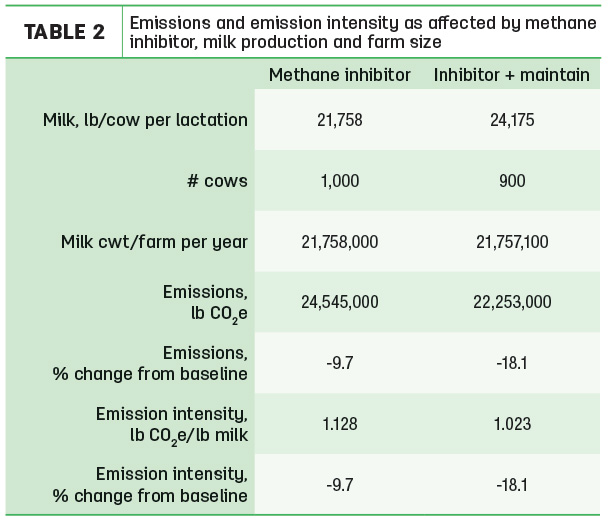
The predicted reduction in emissions and emission intensity due to using a methane inhibitor is similar to that predicted for maintaining milk supply with fewer, more productive cows. This is an important point to consider when evaluating direct methane mitigation; if we are sacrificing milk production to reduce enteric methane, we may not be getting the net change desired.
When we use a methane inhibitor (30% reduction in enteric methane) and maintain milk supply with fewer cows (10% increase in milk per cow and 10% reduction in herd size), we can achieve an even greater reduction in emissions (-18.1%) and emission intensity (-18.1%) than either option alone. Stacking strategies to improve farm production and efficiency with those that directly mitigate methane emissions will allow for greater reduction in overall farm emissions to make inroads to reducing carbon emissions.
With government and industry groups setting goals to reduce greenhouse gas emissions from livestock, it is important to be able to measure the impact of an individual farm and predict how changes on-farm will alter emissions. In general, a lower-producing cow will have lower emissions than a higher-producing cow. However, a higher-producing cow will have a lower emission intensity than a lower-producing cow, due to higher efficiency and less waste per unit of milk. Some groups seeking to reduce emissions will focus on herd size and farm numbers, advocating for fewer cows and farms regardless of effect on milk production.
Agriculture groups point to lower emission intensity with improved practices resulting in increased milk production, while overall emissions still increase. The best solution lies in a balance of the two strategies but must also consider how farming practices, including crop management, animal nutrition, genetics, breeding and fertility, and health impact animal productivity and efficiency.
